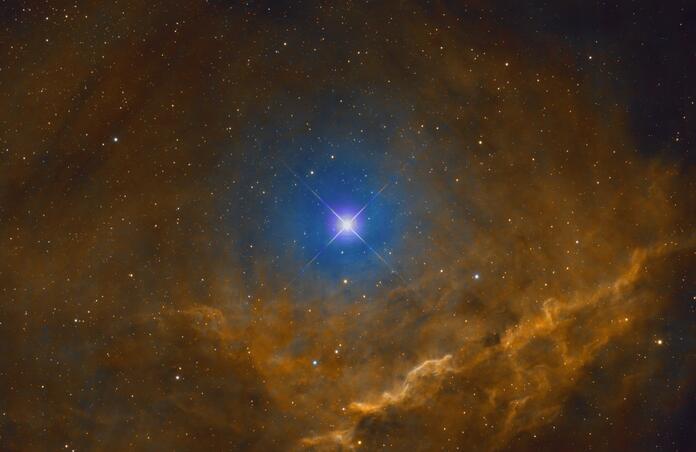PixInsight Deconvolution - Why We Use It

Deconvolution is one of PixInsight’s most powerful programs, but it is also one that takes some time to understand how to effectively use it, especially for beginners to astro image processing. It helps to have a general understanding of what we mean by deconvolution and why we use it. Once you have a general understanding of the principles involved, it becomes a fairly straightforward process to understand how to properly use the tool.
Deconvolution should be used to correct for bloated stars in your image. A beneficial consequence of this using this process is that can also improve the detail of the stars in any galaxies contained in your image.
When we image a deep sky object from the surface of our planet, the image comes with a number of optical distortions with it. Some of the distortion is the result of diffraction which is the interference light waves undergo when these light waves encounter the aperture edges and interior of a telescope. Additional distortions of light waves from a target object occur as they pass through our planet’s atmosphere to get to our telescope and image train. Still another source of problems are any optical imperfections in our equipment. As a result, stars do not appear to us at the eyepiece or our image detector as sharp points; there is some amount of blur that happens for all the reasons I’ve just mentioned. This transformation of a star from a point light source in space to a blurred state is known mathematically as a Point Spread Function or PSF. We call the transition from the star’s original state (point of light) to the blurred state, Convolution.
Deconvolution in PixInsight attempts to determine what the average star’s actual PSF is in an image and then apply the inverse of that function to reverse as much of the convolution as it can in the image. Specifically, it uses an iterative process called the Richardson-Lucy algorithm, named after William Richardson and Leon Lucy.
The bottom line is that it is VERY important to create as accurate a PSF as you can when using the Deconvolution process in PixInsight. There are 2 tools you use to do this in PixInsight; the Dynamic PSF process and a script that I believe is now standard with PixInsight called PSFImage. Both of these processes will help you get a good estimate of the average PSF of the stars in your image, although I will say that the PSFImage script is the easier one to use.
A detailed discussion on how to use the Deconvolution process in PixInsight would make this article unbearably long; you can easily find several tutorials on YouTube that will walk you through the basics on how to use this process.
The attached image is of Sharpless 2-9, also known as Gum 65. Captured on CHI-2, the ASA 500N telescope in the Rio Hurtado Valley in Chile, this is an emission and reflection nebula in Scorpius surrounding the Sigma Scorpii star system. Sigma Scorpii is thought to be a giant variable star and ionizing the entire region. I processed this image in PixInsight from 1-Click Observation narrowband data;
16 exposures x 600” Ha
16 exposures x 600” SII
11 exposures x 600” OIII
Grab all the data here: https://app.telescope.live/click-grab/all?target=sh2-9
